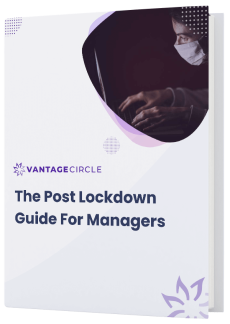Return to Work Checklist- How Organizations Need To Handle It

The world today is not only dealing with the current Covid-19 pandemic but also with changing working standards. As organizations across the globe resort to a remote working stint, they are now looking at resuming re-opening offices and workplaces. Employers should understand that this is not their run-of-the-mill grand re-opening. They should be ready with a return to work checklist to tackle this nervy phase.
Every employer and organization's checklist will and should look different. There might be various nuances that might be unique to your organization. You have to think of a unique way to tackle them. Yet, there is a more generalized version of various things you must look out for before resuming work.
Workplace Planning
Employers need to ensure that the workplace is as safe as possible. Organizations must understand that employees are not returning from a long vacation. They are back from a state of confusion and frustration.
Here are some necessary workplace safety measures that employers must ensure.
-
Proper health screening of each employee.
-
Awareness of how to reduce the risk of COVID-19 while being in close contact with other people.
-
Providing personal protective equipment like PPE kit, masks, sanitizers, etc.
-
Providing relevant details of all the hygiene operations in the company to all employees.
-
Establishing a safe distance between employees. Make sure you don’t start with 100% of your workforce. Start with somewhere about 20%-30% and then ramp up as the situation improves.
-
Defining customer interaction. Limit the number of customers that can visit your workplace at a time. If possible, you can also install a prior reservation system. It will help if your workplace gets completely flooded with customers.
-
You must have proper knowledge of the current situation and rules issued in your area. Make sure you educate all your employees on the current rules so that you don't end up breaking any laws.
Listen to our podcast on: HR Return To Work Considerations With Sumit Neogi.
Recalling Procedures
This part deals with how you will carry out the recalling procedures. You must prepare how your employees can return to work on-site in a managed and scheduled manner.
Tell all your employees to resume on-site work on the same date. It might be chaotic, unsafe, and most will be a violation of the regulations.
-
Start a workshare program that contains the complete details of which employees will be reporting to the workplace on which date.
-
Focus on the high-risk sectors. Give the employees of those sectors an option to continue with their remote work. Make a note of the increased protection or measures when deciding to come back to work.
-
You need to have a measure of how you are going to deal with employees who are not willing to return to the workforce. You can improve their confidence by conducting an orientation program. It will address the safety measures you have taken.
Compensation
During this remote work age, we've seen a lot of companies adjust their payment systems. Address how the pandemic has affected the compensation package. Pass on the required information to the employees.
-
Arrange to check all the missed pay raise or performance reviews. This step should be one at the top of your priority list. Make sure you can communicate any necessary changes to all the stakeholders.
-
Decide whether you will be providing hazard pay or not. Since employees are working during these troubled times, they will expect extra compensation. You need to address this issue even if you are not going to offer any hazard pay. It removes any confusion that might creep into your organization.
-
Decide how you are going to deal with the pay cut. If you have imposed a pay cut for your employees, communicate with them. Tell them how things will change (if they will) once work starts offline. If you didn't introduce any pay cuts, you need to tell them how you are going to deal with them in the future.
Changes in Policy
It would be best if you addressed the global scene. Things are not normal and most probably won’t go back to normal with the snap of your fingers. Employers and organizations will need to develop changes in their policies and communicate the same to the employees.
Here are a few areas where your organization can consider making changes.
-
You will want to change your lunchtime policy. Dedicating an everyday lunchtime might not be a great idea considering the situation.
-
Decide on your business travel policy. Since traveling poses a significant risk, you should try to address this issue as soon as possible.
-
You will need to decide on the flexibility of your working hours. It would be advisable to have a flexible schedule in the beginning. It will keep the contact between your employees the least.
-
Telecommuting policies might need a revamp especially for those opting a public transport for telecommuting.
While returning to work might seem obvious, it won't be so due to the current situation. The most detrimental effect of the pandemic will be an indirect effect on the employees' mental states. It is crucial at this point for employers not to be carried away. Organizations should make full efforts at maintaining the engagement of the employees.
Of course, you need to understand that the above checklist is not an exhaustive list but rather something to build. But whatever happens, the core value of any organization remains the same. Employees are the greatest asset of an organization.

Vantage Circle is a simple AI-powered Rewards & Recognition Platform for upgrading your employee experience and engagement for better productivity.




![How To Build An Interactive and Innovative Workplace [Post Covid]](https://blogimage.vantagecircle.com/vcblogimages/2020/09/Interactive_workplace.png)

